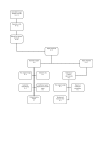The stepped wedge trial design: a systematic review
- PMID: 17092344
- PMCID: PMC1636652
- DOI: 10.1186/1471-2288-6-54
The stepped wedge trial design: a systematic review
Abstract
Background: Stepped wedge randomised trial designs involve sequential roll-out of an intervention to participants (individuals or clusters) over a number of time periods. By the end of the study, all participants will have received the intervention, although the order in which participants receive the intervention is determined at random. The design is particularly relevant where it is predicted that the intervention will do more good than harm (making a parallel design, in which certain participants do not receive the intervention unethical) and/or where, for logistical, practical or financial reasons, it is impossible to deliver the intervention simultaneously to all participants. Stepped wedge designs offer a number of opportunities for data analysis, particularly for modelling the effect of time on the effectiveness of an intervention. This paper presents a review of 12 studies (or protocols) that use (or plan to use) a stepped wedge design. One aim of the review is to highlight the potential for the stepped wedge design, given its infrequent use to date.
Methods: Comprehensive literature review of studies or protocols using a stepped wedge design. Data were extracted from the studies in three categories for subsequent consideration: study information (epidemiology, intervention, number of participants), reasons for using a stepped wedge design and methods of data analysis.
Results: The 12 studies included in this review describe evaluations of a wide range of interventions, across different diseases in different settings. However the stepped wedge design appears to have found a niche for evaluating interventions in developing countries, specifically those concerned with HIV. There were few consistent motivations for employing a stepped wedge design or methods of data analysis across studies. The methodological descriptions of stepped wedge studies, including methods of randomisation, sample size calculations and methods of analysis, are not always complete.
Conclusion: While the stepped wedge design offers a number of opportunities for use in future evaluations, a more consistent approach to reporting and data analysis is required.
Figures
References
-
- Soloman MJ, McLeod RS. Surgery and the randomised controlled trial: past, present and future. Medical Journal of Australia. 1998;169:380–383. - PubMed
-
- Jadad A. Randomised Controlled Trials. London: BMJ Books; 1998.
-
- Cook TD, Campbell DT. Quasi-experimentation: Design and analysis issues for field settings. Boston, MA: Houghton Mifflin Company; 1979.
-
- Gambia Hepatitis Study Group The Gambia Hepatitis Intervention Study. Cancer Research. 1987;47:5782–5787. - PubMed
-
- Smith PG, Morrow RH. Field Trials of Health Interventions in developing countries: A Toolbox. London: Macmillan Education Ltd; 1996.
Publication types
MeSH terms
LinkOut - more resources
Full Text Sources
Medical



